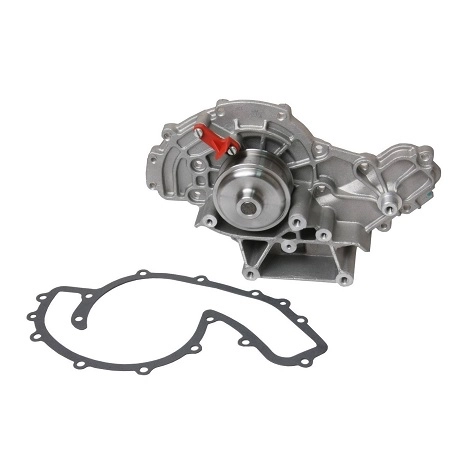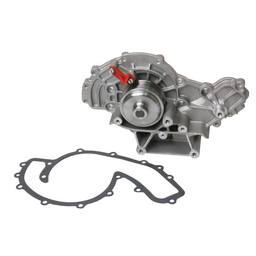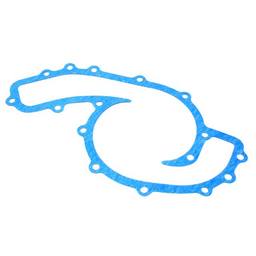Welcome to the definitive guide on replacing the water pump in the iconic Porsche 928. This classic, known for its distinctive design and V8 performance, relies on a robust cooling system to maintain its legendary driving experience. The heart of this system, the water pump, is crucial for preventing overheating and ensuring smooth operation.
Over time, wear and tear can compromise its efficiency, leading to potential engine damage. Whether you’re a seasoned DIY enthusiast or new to Porsche maintenance, this guide aims to equip you with the knowledge to master the water pump replacement process. Jan in as we explore the steps to safeguard your 928’s performance and prolong its legacy on the road.

Understanding the Water Pump
The water pump is at the heart of the Porsche 928’s cooling system, a pivotal component designed to regulate engine temperature and prevent overheating. By continuously circulating coolant between the engine and the radiator, the water pump ensures that your 928 maintains optimal operating temperatures, safeguarding against the risks associated with excessive heat.
Common Signs and Symptoms of a Failing Water Pump in Porsche 928
Water pump issues can manifest in several ways, with each symptom indicating potential failure or wear. Porsche 928 owners should be vigilant for:
Unusual Noises — A failing water pump may produce whining or grinding sounds, indicative of bearing wear or impeller damage.
Coolant Leaks — Look for puddles of coolant under your car, especially near the front where the pump is located. This could signal a compromised seal or gasket.
Overheating Engine — If your 928’s temperature gauge consistently reads higher than usual, accompanied by boiling coolant escaping the reservoir, it could be a sign that the water pump isn’t effectively circulating coolant.
Potential Consequences of Ignoring Water Pump Issues in Porsche 928
Neglecting water pump problems can lead to a cascade of engine issues, significantly impacting your Porsche 928’s performance and longevity:
Decreased Cooling Efficiency — A compromised water pump can diminish the effectiveness of your entire cooling system, leading to reduced engine performance and increased wear and tear.
Severe Engine Overheating — With a non-functional or weakened water pump, your engine can overheat, leading to warped components, head gasket failure, and in extreme cases, total engine seizure.
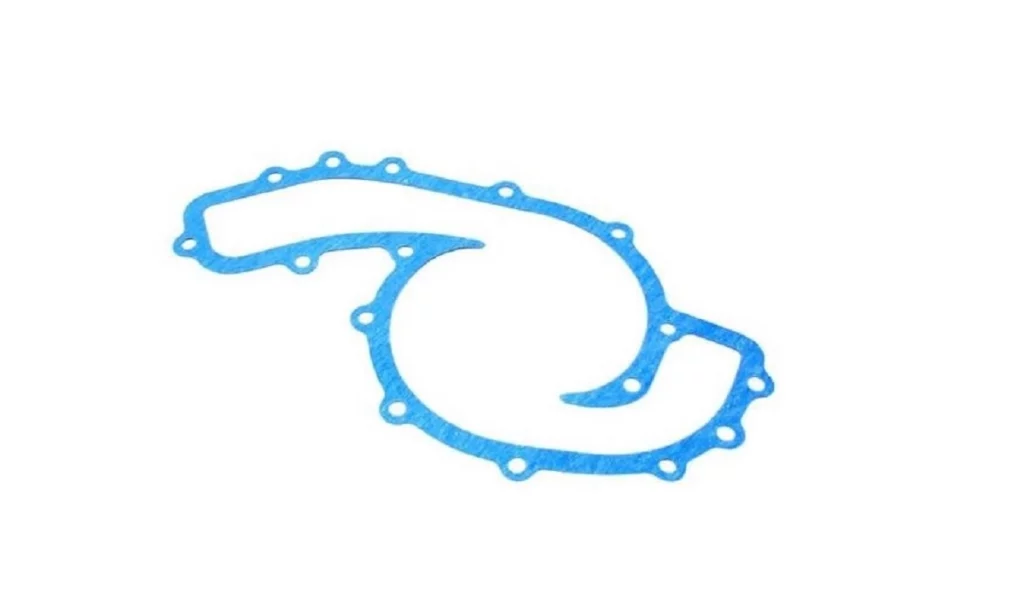
Increased Repair Costs — Delaying water pump repairs can result in more extensive damage, leading to higher repair bills and potential roadside breakdowns.
The water pump is crucial for maintaining the Porsche 928’s legendary performance. Recognizing the early signs of water pump failure and addressing them promptly can save you from costly repairs and preserve the driving pleasure of owning a Porsche 928.
Testing and Troubleshooting
Properly diagnosing and resolving issues within the cooling system of your Porsche 928 is crucial for its longevity and performance. Here are some expert tips on troubleshooting common cooling system problems, including those related to the water pump.
Common Troubleshooting Tips for Coolant Leaks and Cooling System Issues
Visual Inspection — Start with a thorough visual inspection of the cooling system. Look for signs of coolant leaks, particularly around the water pump, hoses, and radiator. Coolant streaks or residue can often lead to the source of the leak.
Pressure Test — Utilize a cooling system pressure tester to apply pressure to the system. This will help identify leaks that might not be visible under normal conditions.
Check the Radiator Cap — A faulty radiator cap can cause cooling system pressure loss and overheating. Test the cap with a pressure tester to ensure it maintains the correct pressure.
Thermostat Functionality — A malfunctioning thermostat can lead to overheating. Test it by placing it in a pot of water and heating it. The thermostat should open at its rated temperature.
Inspect the Radiator Fan — Ensure the radiator fan operates correctly. A non-functioning radiator fan can cause overheating, especially during idle or low-speed conditions.

Tips on Testing the Water Pump Functionality
Testing the water pump with the timing belt removed offers a direct assessment of its condition:
Pulley Inspection — With the timing belt off, inspect the water pump pulley. No play in any direction should indicate a solid bearing without wear.
Smooth Rotation — Rotate the pulley by hand. It should turn smoothly with a slight resistance. Any roughness or excessive ease in rotation could indicate a failing bearing or impeller issue.
Noise Check — Listen for any unusual noises during rotation. Grinding or whining sounds can signal internal wear or damage to the water pump.
Seal Inspection — Examine the area around the water pump seal for any signs of coolant leakage. Even a small leak can indicate a compromised seal that needs replacement or resealing.
Impeller Check — If possible, remove the water pump and visually inspect the impeller for any signs of corrosion or damage. A compromised impeller can drastically reduce the pump’s efficiency.
Addressing Potential Water Pump Issues the Right Way
Ignoring the engine’s cooling system issues can lead to catastrophic engine damage due to overheating. If any abnormalities are found during testing, consider repairing or replacing the part immediately, especially the water pump, as it plays a vital role in the cooling system. Using only high-quality replacement parts ensures the longevity and performance of your Porsche 928’s cooling system.
Remember, a properly functioning water pump is key to maintaining the optimal operating temperature of your Porsche 928’s engine, ensuring both performance and reliability.
Find Top-Notch Porsche Parts at Competitive Prices
At eEuroparts.com, we pride ourselves on offering an extensive collection of genuine Porsche and OEM parts at prices that are hard to beat online. We aim to support every Porsche fan with premium car parts, making the high cost of maintenance a distant memory.

Each item in our selection is chosen with your Porsche’s specific needs in mind, ensuring they fit perfectly and uphold OEM quality standards. Choosing eEuroparts.com means you’ll enjoy superb savings without skimping on quality, solidifying our position as the first choice for Porsche DIY enthusiasts who value affordability and reliability.
Preparation for Replacement
When it comes to replacing the water pump on your Porsche 928, being well-prepared is half the battle. Following safety precautions can make the process smoother and prevent potential issues. Start by allowing the engine to cool down completely to avoid the risk of burns from hot engine components or coolant.
Choose a well-lit and ventilated workspace that’s free from clutter to minimize the chances of accidents. Personal protective gear, such as working gloves and safety glasses, is essential to protect yourself from potential chemical spills and debris.
Keeping your tools and replacement parts organized will keep your workspace safe and streamline the repair process, making it more efficient and less prone to errors.
By meticulously preparing for the water pump replacement, you ensure a safer repair process and increase the likelihood of a successful outcome. Remember, setting up properly can save you time and trouble in the long run.
Porsche 928 Water Pump DIY Replacement
A water pump replacement for your Porsche 928 is not for the faint of heart. This task, while rewarding, demands precision, patience, and the right set of tools. Before you jump in, ensure you’re equipped with essential tools as listed below:

- Safety goggles
- Working Gloves
- Wheel chocks
- Hydraulic jack rated 2-ton
- Jack stand “flat top” design rated 2-ton
- Coolant drain tray
- Zip ties
- Paint marker
- Binder clips
- Sandpaper
- Brass gasket scraper
- Lubricating oil spray
- ½”, ⅜”, and ¼” ratchet and socket set
- Allen key bit socket set
- Torx bit socket set
- Combination spanner set
- Screwdriver set
- Plastic hammer
- Timing belt tensioner tool (Kempf tool)
- Flywheel lock tool
- 2-jaw and 3-jaw pulley puller
- Prybar set
- Breaker bar
- Torque wrench
The complexity of this DIY project stems from the necessity to remove the timing belt, a preliminary step that requires careful handling to avoid disturbing the engine’s timing. For those unfamiliar with this process, we’ve prepared a comprehensive guide on Porsche 928 timing belt replacement that’s crucial for successfully accessing and replacing the water pump. Let’s roll up our sleeves and do this, shall we?
Loosening the Water Pump
Start by unscrewing 13 screws that hold the water pump to the engine block (10 mm). Be aware that the length of screws varies. A trick of the trade here is to make an outline of the water pump with its mounting hole on a piece of cardboard. Use the cardboard as a placement guide for the screws after removal so you wouldn’t get confused about which screws go to which screw hole. Smart, right?
Removal of Water Pump
Once all screws are removed, use a plastic hammer and gently tap on the water pump mount to dislodge it. Afterward, pry it off the engine block with a big flat screwdriver. Be very careful and do not focus on one point. Slowly pry it out from multiple points until the water pump is out of the engine block.
Preparation for installation
After removing the water pump, use a brass gasket scraper and fine-grit sandpaper to clean the mating surface. A dirty and uneven mating surface will undoubtedly cause a leak; we don’t want that.
Once the surface is sparkly clean, we can now install the water pump gasket into the surface. The dowel pins can be used to retain the gasket in its place. For added protection from leaks, a thin coat of coolant-safe sealant is recommended.
Porsche 928 Water Pump Installation
Install the water pump into the engine block. Ensure that the water pump gasket is installed correctly to prevent it from getting damaged during installation. Hand-tighten the screw on the water pump.
As we have discovered before, the lengths of the screws vary. Be sure that the right screw goes to the right hole to prevent damage. Once the water pump is seated correctly and the screws are hand-tightened, tighten the screws from the inside out to 7 ft. lb – 10 Nm.
Maintenance Tips for Longevity
Proper care of your Porsche’s cooling system is not just about routine checks; it’s about understanding the nuances that keep this sophisticated system running smoothly. The water pump, a crucial system component, demands particular attention to ensure your classic Porsche operates at its best.
Cooling System Maintenance Recommendations
To safeguard the health of your water pump and the cooling system at large, I recommend the following:
Coolant Ratio — Always maintain the correct ratio of coolant concentrate to water. A 50/50 mix is typically recommended, but refer to Porsche’s manual for the specific ratio suited to your climate. This balance ensures optimal cooling and protection against extreme temperatures and the engine’s health.
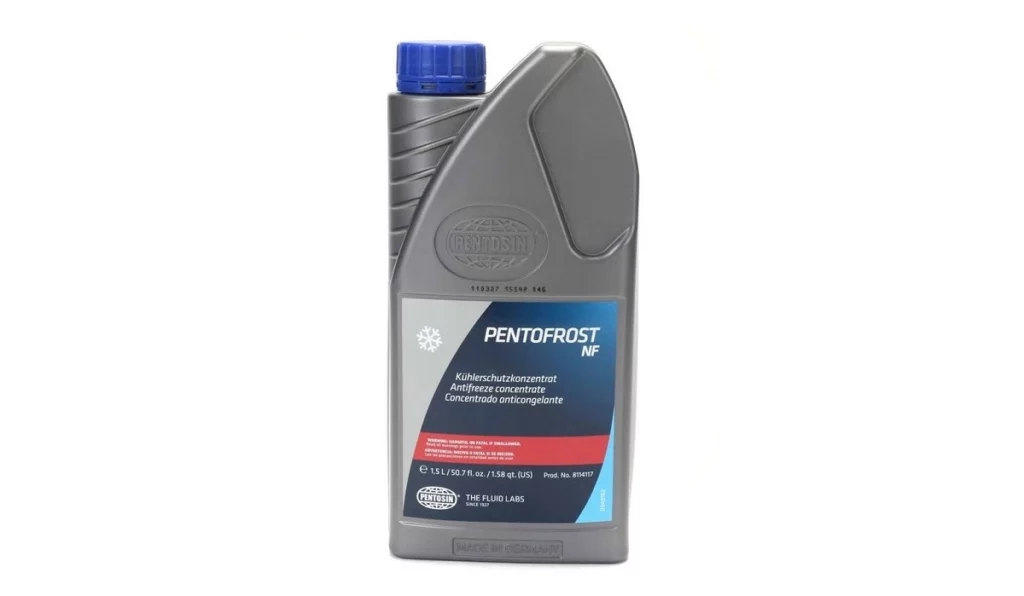
Coolant Type — Stick to the type of coolant that’s recommended for your Porsche. Mixing different types of coolant, especially those of different colors, can reduce cooling efficiency and make it harder to spot leaks. The coolant’s color serves as a visual aid in identifying leaks; altering this can hinder your maintenance efforts. Our guide on Porsche’s Coolant is there to help you select the right coolant for your Porsche 928.
Signs Indicating Maintenance is Needed
Stay vigilant for these indicators that your cooling system and water pump may require attention:
Service Due — Adhere to your Porsche’s service schedule, especially regarding the cooling system. Regular maintenance can preempt issues before they escalate.
Overheating — If your Porsche frequently overheats or runs hotter than usual, it’s a clear signal that the cooling system may be compromised. This could be due to a failing water pump or other issues within the system.
Abnormal Noises — Listen for unusual sounds from the water pump area, such as whining or grinding. These can indicate a failing water pump bearing or an impeller problem.
Ignoring these signs can lead to severe engine damage, necessitating costly repairs. Regular maintenance, coupled with an attentive eye (and ear) for these signs, will ensure your Porsche classic car remains a source of pride and joy, preserving its legacy for years.
Choose eEuroparts.com for Your European Ride
For Porsche classic car aficionados, eEuroparts.com is your trusted source for premium parts, ensuring your vehicle’s legacy endures. We specialize in Porsche-specific components and other European car brands, offering everything from maintenance essentials to comprehensive repair kits to meet the manufacturer’s exact standards. Our intuitive website and expert customer service streamline your shopping experience, making finding the right parts for your project easy.
At eEuroparts.com, we share your passion for Porsche, dedicating ourselves to quality and customer satisfaction. Choose us for a seamless blend of quality, expertise, and dedication and keep your Porsche performing at its peak. Visit eEuroparts.com today, where every part contributes to your Porsche’s storied journey.

